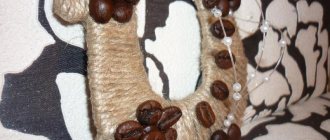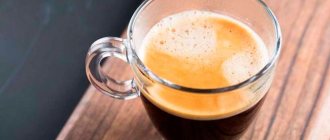Since drinking coffee has been linked to numerous health benefits, such as reducing the risk of type 2 diabetes and liver disease, you may wonder if coffee beans have the same effect.
Chewing coffee beans—especially chocolate-covered ones—is an increasingly popular way to get caffeine.
This article examines the potential benefits and risks associated with consuming coffee beans.
Is it safe to eat coffee beans or is it unhealthy?
Safety
Coffee beans have been consumed hundreds of years ago, or even more.
It is believed that before coffee became a beverage, its beans were often mixed with animal fat and consumed to boost energy levels ().
Coffee beans provide the same nutrients as a cup of coffee, but in a much more concentrated form.
Because regular coffee is filtered and diluted with water, you only get a fraction of the caffeine and other substances found in whole coffee beans.
Moreover, eating coffee beans rather than drinking the beverage may result in faster absorption of caffeine through the oral mucosa (, ).
Both the beneficial and harmful effects of coffee are enhanced when the beans are consumed whole.
Therefore, it is best to consume coffee beans in moderation.
However, green coffee beans - which are raw - are not very pleasant to eat. They have a bitter, woody taste and are difficult to chew. Roasted coffee beans are slightly softer.
Chocolate-coated, roasted coffee beans are often sold as a snack and are easy to find in the store.
Summary:
Coffee beans are safe to drink. However, coffee beans are recommended to be consumed in moderation because they contain more concentrated amounts of nutrients than liquid coffee.
The history of the first “eaters”
According to travellers' accounts, people ate coffee beans long before they learned how to make a drink from them. African shepherds noticed that wild goats happily eat the leaves and fruits of coffee trees, and then become much more energetic. People who tried the delicacy were convinced of the tonic effect.
Later, the aborigines used the grains for dry rations on long walks. These were balls of fruit coated with animal fat. This “pocket” ration provided nutrition and a surge of energy. Don't miss: The history of the origin of coffee - from its appearance to the present day
Potential Health Benefits
Although many studies have examined the benefits of coffee as a beverage, few have examined the effects of consuming whole coffee beans.
However, consuming coffee beans likely provides the same health benefits as drinking the beverage. Here are some potential health benefits of whole coffee beans.
Excellent source of antioxidants
Coffee beans contain powerful antioxidants, the most common of which is chlorogenic acid, a health-promoting polyphenol ().
Research shows that chlorogenic acid may reduce the risk of diabetes and may fight inflammation. Some studies suggest that it may also have anti-cancer properties (, , , ).
The amount of chlorogenic acid in coffee beans varies depending on the type of coffee bean and roasting methods ().
In fact, roasting can cause a 50-95% loss of chlorogenic acid - although coffee beans are still considered one of the best sources of this polyphenol ().
An easily digestible source of caffeine
Caffeine is a natural stimulant found in a variety of foods and drinks, including coffee and tea.
On average, eight coffee beans contain as much caffeine as one cup of coffee.
Your body absorbs caffeine from whole coffee beans faster than from liquid coffee (, ).
Caffeine affects your brain and central nervous system, which has many beneficial effects. For example, this substance may increase energy levels and alertness, improve mood, memory and productivity (, ,).
One study found that drinking 2 cups of coffee with 200 mg of caffeine—the equivalent of about 17 coffee beans—was as effective as taking a 30-minute nap in reducing driving errors ().
In another study, 60 mg of caffeine—about 1 espresso or 5 coffee beans—led to improved feelings of satisfaction, mood, and attention ().
All this happens due to the fact that caffeine suppresses the hormone adenosine, which causes drowsiness and fatigue ().
This chemical may also improve physical performance and weight loss by improving metabolism (,).
Other Potential Benefits
Observational studies show that coffee also has other benefits, including reducing the risk of developing the following diseases and conditions (, , , , , , , ):
- death from all causes
- heart disease and stroke
- certain types of cancer
- liver diseases, including non-alcoholic fatty liver disease, liver fibrosis and cirrhosis of the liver
- diabetes mellitus type 2
- brain diseases and conditions such as depression, Alzheimer's disease and Parkinson's disease
Animal and human studies also show that green coffee bean extract may lower blood pressure in people with high blood pressure (, , ).
However, keep in mind that these benefits were found in observational studies rather than strictly controlled studies. Therefore, more research is needed before firm conclusions can be drawn.
Summary:
Coffee beans are a concentrated source of antioxidants and caffeine. They have anti-inflammatory properties that protect against certain diseases and improve energy levels and mood.
Why haven't people stopped chewing coffee beans?
An incredible number of delicious drinks are prepared from coffee. But culinary evolution did not force people to completely abandon the desire to eat raw materials in their natural form. The main arguments of avid “chewers”:
- Pleasure, taste. When crushed in the mouth, the beans crunch pleasantly, gradually exuding the natural, pure taste of coffee.
- An instant boost of energy. The effect is ensured by the high caffeine content and its rapid entry into the body.
- Benefit. Basically, scientists studied the effect of the finished drink on health. But coffee beans are also beneficial for humans when consumed in moderation. Logical, given the analogy of the composition.
It is believed that coffee berries can hide the smell of alcohol. This is only possible with a very weak, distant “aroma”. In serious cases, even special means do not help.
- Read more: Coffee after alcohol - harm or benefit
Potential health hazards
While consuming coffee beans in moderation is completely safe for health, consuming too much of them can cause problems. Additionally, some people are sensitive to substances in coffee beans that can lead to unpleasant side effects.
Heartburn and indigestion
Some compounds in coffee beans can cause stomach upset in some people.
This is because caffeine and other compounds called catechols present in coffee beans increase stomach acid (,).
This can lead to heartburn, a condition in which stomach acid backs up into your esophagus and causes a burning sensation.
Eating coffee beans may also cause bloating, nausea, and stomach upset (,).
Some studies have noted that using green coffee bean extract in higher doses caused diarrhea and stomach upset in people with sensitive stomachs ().
If you suffer from heartburn or other stomach problems, you may need to avoid or limit your consumption of coffee and coffee beans.
Laxative effect
For some people, drinking coffee has a laxative effect ().
Caffeine does not appear to be the culprit for the laxative effect, as decaffeinated coffee has also been found to increase bowel movements ().
Although rare, even low doses of caffeinated coffee can cause diarrhea ().
People with gut conditions such as inflammatory bowel disease (IBD) or irritable bowel syndrome (IBS) should consume coffee beans with caution.
Sleep disturbance
While the caffeine in coffee beans can give you a much-needed boost of energy, it can also lead to sleep problems—especially for people who are sensitive to caffeine ().
Research shows that people who are sensitive to caffeine or consume too much of it are at greater risk of having trouble falling and staying asleep, which can cause daytime exhaustion ().
The effects of caffeine can last up to 9.5 hours after consumption ().
If caffeine is affecting your sleep, reduce the amount you consume during the day and avoid consuming it very close to bedtime.
Other potential side effects
High caffeine intake is associated with other unpleasant and potentially dangerous side effects, including:
- Increased anxiety symptoms such as rapid heartbeat, nausea, and feelings of stress (, )
- Withdrawal symptoms - including headache, anxiety, fatigue, tremors and poor concentration - if you suddenly quit coffee (, )
- Increased risk of pregnancy problems such as miscarriage, low birth weight, and early birth (, , )
If you are sensitive to caffeine, struggle with anxiety, or are pregnant, it is best to limit or avoid coffee beans.
Likewise, if you are experiencing withdrawal symptoms, try reducing your caffeine intake gradually.
Summary:
Eating too many coffee beans can cause a wide range of negative effects, such as heartburn, indigestion, increased bowel movements, sleep problems, anxiety and pregnancy complications.
Roasting degrees
There are many varieties of coffee beans. They have their own characteristics. But the taste and aroma also depend on the degree and method of frying. Coffee lovers believe that it is better to brew it from beans processed at home. After all, during industrial processing they lose most of their aromatic substances.
Those who roast their own coffee can choose the type and degree of roast to suit their taste.
- A light or light roast is achieved at temperatures up to 2000. This is the cinnamon or New England type. The taste is slightly sour.
- Medium roast is city or Viennese. Temperature 210-2300. The fruits acquire a brown color and a chocolate or caramel flavor.
- Dark roasting is achieved at temperatures up to 2450. The beans are a rich dark brown color. The taste is bitter and smoky. This is a French or Italian type. These beans are used for espresso.
- There is also maximum roasting or Spanish. The beans are fried at a temperature of 2500. They turn black-brown and acquire a sharp bitter taste. Not suitable for all varieties.
How many coffee beans can you eat without harming your health?
The amount of coffee beans you can safely consume comes down to the safe level of caffeine.
Although caffeine tolerance varies, single doses of up to 200 mg and consumption of up to 400 mg per day—about 4 cups of natural coffee—are considered safe for adults. Exceeding these doses may negatively affect your health ().
There is currently insufficient data to determine safe levels of caffeine for children and adolescents, and they are likely to be more sensitive to its effects.
The amount of caffeine in coffee beans depends on the size, variety and length of roasting.
For example, Robusta coffee beans typically contain about twice as much caffeine as Arabica coffee beans.
On average, chocolate-covered coffee beans contain about 12 mg of caffeine per coffee bean, including the caffeine in the chocolate ().
This means adults can eat about 33 chocolate-covered coffee beans without exceeding the recommended safe level of caffeine. However, these treats can also contain excessive calories, high amounts of fat and added sugar - so it's best to limit your intake.
Moreover, if you consume caffeine from other foods, drinks, or supplements, you will need to reduce your coffee bean intake to avoid unpleasant side effects.
Summary:
The level of caffeine in coffee beans varies depending on roasting methods and the type of bean. While you can eat quite a bit without exceeding safe caffeine limits, snack varieties are often coated in chocolate and can be unhealthy if consumed in excess.
Recipes that use coffee beans
There are recipes that involve the use of coffee beans. Most often, the beans are consumed covered with chocolate glaze. Additionally, sambuca is prepared with grains.
Chocolate covered coffee beans
To prepare the treat, dark chocolate is first melted in a water bath. Pour coffee beans into the mixture, mix the ingredients well and remove the beans with a fork. They are laid out on parchment and placed in the refrigerator for several hours until hardened.
Chocolate covered beans can be found commercially. Some people prefer to add grains to a larger slab. This option will be more appealing to chocolate lovers, since in this case the proportion of coffee in the finished product is lower and its concentration can be adjusted.
Sambuca Con Mosca
Literally translated, the name of the cocktail means “sambuca with flies.” In this case, the beans that are added to the drink are compared to insects.
Place 3-5 grains in a cognac glass and fill them with sambuca. The drink is set on fire. Let it burn for 10 seconds, then pour the liquid along with the beans into an old-fashioned glass. It is covered with cognac on top so that the flame goes out. After this, the sambuca is drunk in one gulp, and the grains are chewed.
Summarize
- Coffee beans are safe to drink, but should not be consumed in excess.
- Coffee beans contain antioxidants and caffeine, which can boost energy levels and reduce the risk of certain diseases. However, too much can cause unpleasant side effects. Chocolate-covered coffee beans may also contain excess calories, sugar and fat.
- However, if consumed in moderation, coffee beans can be a safe and healthy option.
The article was prepared by experts for informational purposes only. It should not be used as a guide for treating medical conditions and is not a substitute for professional medical advice, diagnosis, or treatment. In case of illness or any symptoms, you should always consult a doctor and not self-medicate.
Tags: Coffee
About the author: Alexander Fedorov
Candidate of Biological Sciences, biologist, nutrition expert. Graduated from Stavropol State University with a degree in Biology at the Faculty of Biology and Chemistry.
- Related Posts
- 8 Nuts with the Highest Protein Content
- What are the benefits of coconut pulp? Useful properties and contraindications
- Anise seeds: beneficial properties and contraindications
« Previous entry











